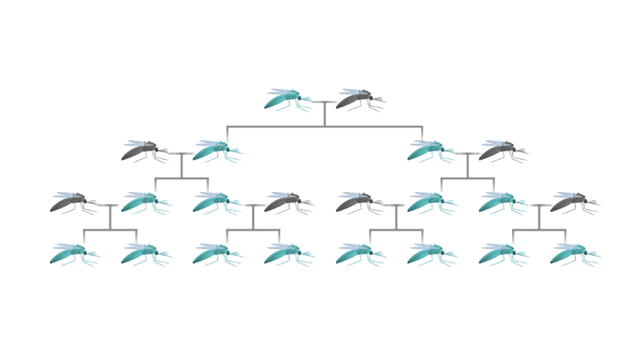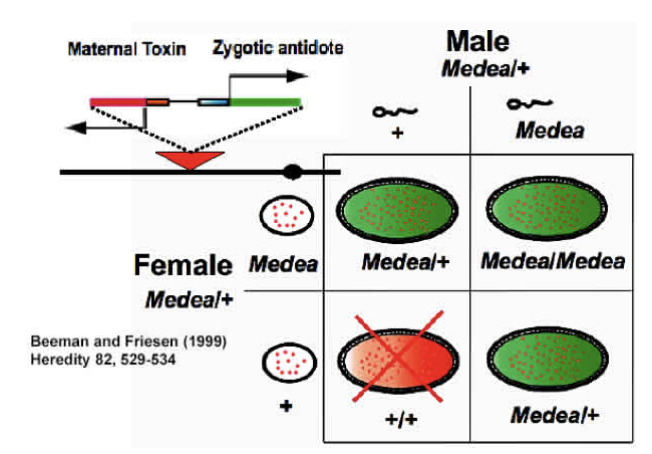 GENE DRIVES AND THE POTENTIAL BENEFITS OF CRISPR TECHNOLOGY APRIL 9, 2018 BY MATTHEW EDGINGTON Marshall and Akbari review a range of different proposed gene drive systems and discuss ways in which CRISPR may be useful in engineering them in a recent issue of ACS Chemical Biology. In the years since translocations were first suggested as a genetics-based method for the control of insect populations, a number of different gene drive strategies have been proposed. To date, progress toward fully functioning versions of each of these systems has been extremely varied. As such, the rapid advancement of CRISPR gene editing technology has given hope that the development of a wide range of gene drive systems should be simplified and accelerated. A SELFISH GENE (BLUE) SPREADING THROUGH A MOSQUITO POPULATION This review is organised according to the expected behaviour of the systems discussed. In particular, the authors discuss threshold-dependent drives (translocations and engineered underdominance), threshold-independent drives (Medea, homing-based systems and driving Y chromosomes) and temporally self-limiting drives (killer-rescue and daisy drives). For each system discussed, the authors outline key details including the drive mechanism, predicted dynamics following release into a wild population and current progress toward engineering them. For the non-CRISPR-based systems discussed here (i.e. translocations, engineered underdominance, Medeaand killer-rescue), a number of ways in which CRISPR technology could accelerate gene drive development are proposed. Specifically, the authors note that CRISPR should provide a new means of engineering lethal toxins and also that CRISPR has already been used to generate site-specific chromosomal translocations. THE TOXIN-ANTIDOTE – BASED DRIVE SYSTEM KNOWN AS MEDEA. EMBRYOS WITHOUT MEDEA WILL DIE BECAUSE OF MATERNALLY DEPOSITED ‘TOXINS’. While discussing threshold-independent drive systems, the authors point out the need to develop remediation measures in case such a system were to produce unintended/undesirable consequences. As such, for Medeathey discuss the possibility of releasing a second generation element that should spread at the expense of both the original version and the wild-type allele. For homing-based systems a range of different remediation strategies are discussed, namely ERACR, CHACR and an immunizing reversal drive. As these are summarized in the review, we do not outline their workings here. AN EXAMPLE OF AN ENGINEERED UNDERDOMINANCE SYSTEM Finally, the authors discuss the recently proposed (and not yet developed or extensively modelled) daisy quorum drive system. Briefly, this would use either a daisy-chain or daisyfield drive system to produce an underdominance effect in a target population. Thus, daisy quorum is proposed as a method for generating threshold-dependence using a temporally self-limiting drive system. This paper provides a good review of a range of different gene drive strategies, some challenges encountered in engineering them and opportunities whereby CRISPR technology could help simplify/accelerate the development of these systems. John M. Marshall and Omar S. Akbari (2018) Can CRISPR-Based Gene Drive Be Confined in the Wild? A Question for Molecular and Population Biology. ACS Chem. Biol. 13. 424-430 https://pubs.acs.org/doi/abs/10.1021/acschembio.7b00923
0 Comments
Leave a Reply. |
Archives
June 2024
|

 RSS Feed
RSS Feed
